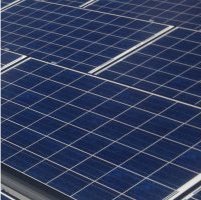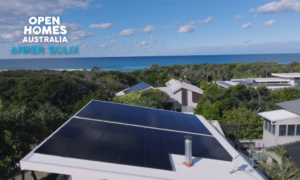Researchers at Stanford University believe they have discovered an efficient way to reduce solar cell temperatures and improve their efficiency.
The wattage rating of a solar panel is based on standard testing conditions (STC). This testing occurs at a solar cell temperature of 25 degrees Celsius.
As a solar cell heats above 25 degrees Celsius – which can occur in relatively low ambient temperatures – the current output increases but voltage decreases faster. This results in an overall drop in efficiency.
The impact can be significant – output efficiency can be reduced by up to 25% on particularly hot days. This is the reason why solar panels can perform better on a sunny winter’s day than during the middle of summer.
The temperature coefficient of a module should be one of the considerations when solar panels. The lower the temperature coefficient, the better.
For example, a panel indicating a temperature coefficient of -0.50% means for each degree above 25˚C, the maximum power output of the module of the panel is reduced by 0.50%. Therefore, and assuming all other attributes are equal, a panel with a temperature coefficient of –0.45% will generally perform better in a hot climate.
One of the holy grails of solar research and development is finding an efficient and cost effective way to keep solar cells cool while preserving their light absorption attributes.
Researchers from Stanford University in the USA say they have developed and tested a new material that can cool a solar cell by up to 13° Celsius under California’s winter sun.
The researchers etched tiny tapered holes, approximately 6 micrometers across and 10 micrometers deep, in a transparent silica (silicon dioxide) wafer. Silica most commonly exists in nature as quartz.
Testing of this wafer placed on a solar cell mimic indicated the holes smoothed the path the thermal radiation took to escape. The researchers estimate that the 13 degrees of cooling would result in an absolute efficiency improvement of more than 1 percent.
An additional benefit of solar panel cooling is it can help to protect various components from cumulative heat damage that could occur over long periods.
The researchers will next trial their invention on a real solar cell to demonstrate their predicted efficiency improvements and will present their results at the Conference on Lasers and Electro-Optics (CLEO) in California in June.














































